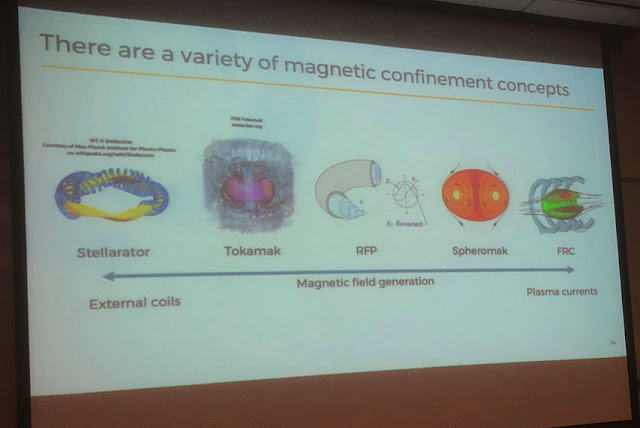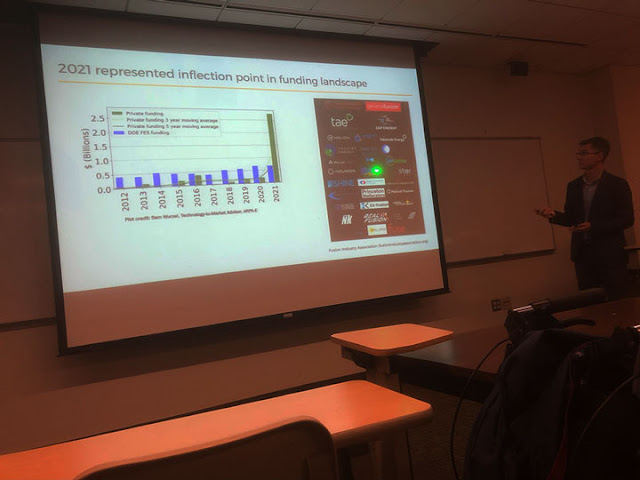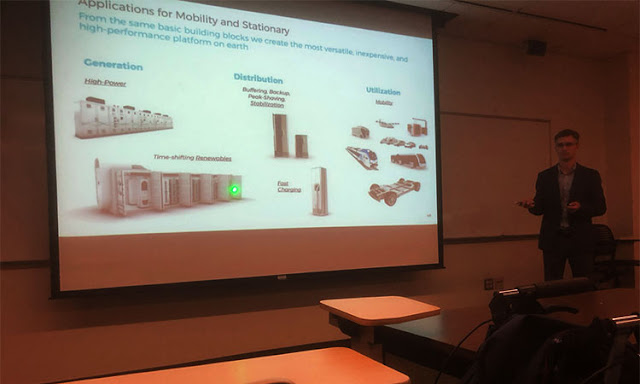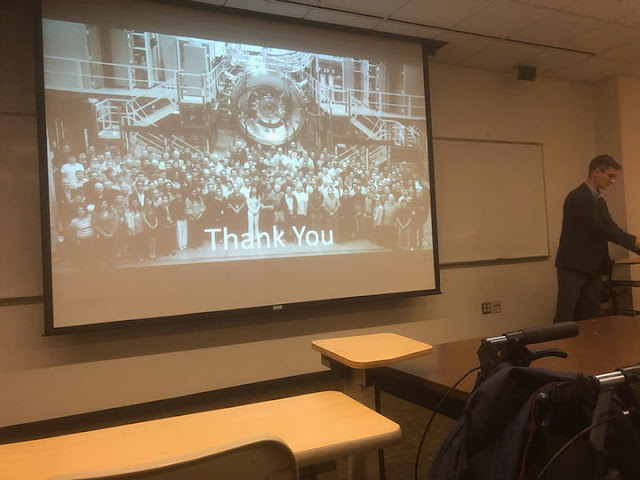Greetings from Palmia Observatory
Stars are powered by fusion and the potential benefits of fusion power here on Earth are of interest and some latest results by TAE, formally Tri-Alpha Energy, as described at the April 17 CSULB Physics Colloquium are covered here.
One of my earlier first posts on some of the fusion research activities and companies was covered recently from this Palmia Observatory post of September 2020: Some fusion research companies
Check out that blog post for some background but for now let's provided some comments on the presentation by Artem Smirnov from TAE Technologies. A key aspect of TAE fusion research is through the use of "aneutronic" fusion, which essentially means the use of a fusion reaction that minimizes the production of neutrons which create some radioactive waste, but at the same time release large amounts of fusion energy.
 |
| Aneutronic Fusion Developments at TAE (Source: A. Smirnov presentation at CSULB) |
Some of the advantages of Aneutronic fusion are shown in the slide screenshot below.
 |
| Benefits of Aneutronic Fusion (Source: A. Smirnov presentation at CSULB) |
TAE aneutronic fuels are not as efficient as the Deuterium-tritium fuels and require higher confinement temperatures, but offer the added benefits of not producing a lot of neutrons and the fuels are much more readily in supply.
 |
| Aneutronic fusion fuel Hydrogen-boron, pB11 ( (Source: A. Smirnov presentation at CSULB) |
All fusion reactions have to meet the high temperature and high pressure requirements in order for the repulsion forces between protons to be overcome in order for the atomic particles to combine or fuse together. In stars it is gravitational force that compresses the stellar material to higher and higher temperatures and pressures in order to allow the fusion process to occur. To meet these high temperatures in the laboratory and for sufficient time for the fusion reactions to occur is called the Lawson Criterion
 |
| Fusion Reactors and Lawson's Criterion (Source: A. Smirnov presentation at CSULB) |
Fusion research in the past 40 years has tried using many different ways of confining the plasma sufficiently to meet the Lawson Criterion, of which the Tokomak has been one of the most popular. TAE is developing the Field Reversed Configuration, FRC, where the magnetic field used to confine the plasma is generated internally by inducting high currents into the plama.
 |
| Some magnetic confinement of plasma configurations (Source: A. Smirnov presentation at CSULB) |
In this next slide we see the internal magnetic field generated in the confined plasma
 |
| FRC confines the plasma with internal magnetic fields (Source: A. Smirnov presentation at CSULB) |
 |
| Animation of confined plasma inside FRC machine (Source: A. Smirnov presentation at CSULB) |
Meeting the Lawson confinement time is demonstrated with FRC technology as shown in this slide. The confinement time is stable at 40 milliseconds and fusion can occur.
 |
| TAE developed First Field Reversed Configuration (Source: A. Smirnov presentation at CSULB) |
So, in 20+ years, TAE has made many key accomplishments.
 | |
|
 |
| Future FRC prototypes out to 2030+ timeframe (Source: A. Smirnov presentation at CSULB) |
When one looks at the history of funding for fusion research we see that mostly in the past the government provided the research funds. TAE was always privately financed. Now with many financial investors having a very long time perspective, willing to wait many years for the investment to pay off, there are a log more funds available from private investors. See the big spike in investment, especially from 2021 onward. So even if commercial fusion power is say 20+ years away, there is still a lot of investment interest.
 |
| Surge in private funding for fusion power development (Source: A. Smirnov presentation at CSULB) |
Also it is important to keep in mind that recent press releases about fusion breakthroughs, such as at the National Ignition Facility, of having achieved breakeven, we need to keep in mind they have a different specific meaning to "breakeven." They typically mean for example that the energy in the laser beam, which compresses the hydrogen pellet just matches the energy released by the fusion products. What they often fail to say that the energy loss used to produce the laser beam can be more than a hundred times larger.
TAE has been able to spin off some of the neutral beam injector technology used to add energy to the confined plasma in the FRC machine. These neutron beams are expanding the availability of cancer treatment therapies. These technology spinoffs then in addition to their benefits for health care, help finance fusion research.
 |
| Spinoff neutral beam source technology for cancer treatment (Source: A. Smirnov presentation at CSULB) |
Huge electrical power storage systems are required to drive the FRC machine. Here we see that even though the research laboratory is only supplied with 2 MW from the city utility, TAE has installed energy storage to store and then deliver power for the FRC fusion requirements of 750 MW.
This huge requirement for energy storage was what excited me about possibly working with TAE some 10 years ago when I was doing research and development on systems like that to be used in electromagnetically launching aircraft, without the use of steam catapult. In that case the requirements were something like 100 megajoules of energy storage to be released in 2-3 seconds to launch the aircraft. So, for a 2 MW electric utility it might take 50 seconds to store 100 megajoules of energy. So the storage requirements for "Norman", which operates in 40 millisecond pulses, are huge too.
 |
| Pulsed power FRC requirements required gigantic energy storage (Source: A. Smirnov presentation at CSULB) |
So, after TAE developed these huge energy storage technologies they recognized they could be spun off as a separate marketable technology and help finance the ongoing fusion research.
 |
| Spinoff energy storage products from TAE FRC development (Source: A. Smirnov presentation at CSULB) |
Finally, Smirnov concluded the presentation with an image of some of the TAE team members and one of the FRC machine prototypes, affectionally called "Norman" in reference and gratitude of one of the initial founders of TAE, Professor Norman Rostoker, UCI, who passed away in 2015.
 |
| FRC machine, Norman, and some TAE team members (Source: A. Smirnov presentation at CSULB) |
The presentation was very informative and we appreciate being able to attend. Thank you, Artem Smirnov, TAE and CSULB!
Until next time,

No comments:
Post a Comment